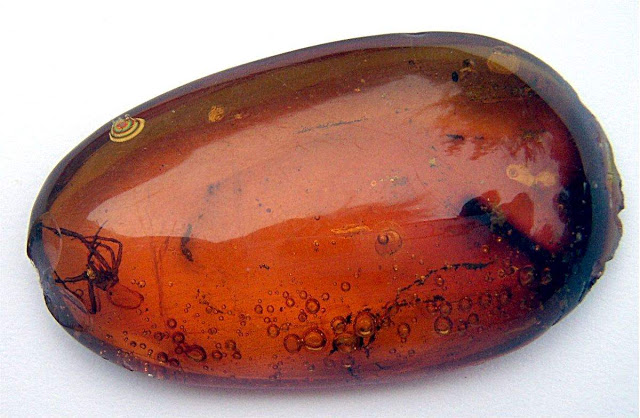Oldest Preserved Spider Web dates back to Dinosaurs
The oldest known spider web in the world has been discovered on a beach in the English city of Sussex, caught inside an ancient amber chunk

In December scientists found the rare amber fossil and have now confirmed that it contains remains of spider silk woven by an ancestor of modern spider weaving spiders some 140 million years ago.
The researchers discovered that ancient silk threads share many common features in modern spider webs, including droplets of sticky glue that are used for holding the web together and catching the prey after cutting the amber into thin sections and examining every piece under the powered microscope.
According to paleobiologist Martin Brasier of Oxford University, the gooey droplets suggest that spiders were starting to spin webs that were better adapted for catching flying insects.
“Interestingly, huge radiation took place in flying insects and bark beetles about 140-130 million years ago,” Brasier wrote in an email to Wired.com. “So we may be seeing a co-evolution of spiders and insects here.”
The new discovery is the first example of an amber fossil from the early Cretaceous period when dinosaurs like spinosaurus and psittocosaurs roamed the Earth.
“Silk is a relatively delicate material and it is rarely preserved in the fossil record, except when entombed in amber,” Brasier and colleagues wrote about the discovery in the upcoming December issue of the Journal of the Geological Society.
The researchers think pieces of organic material, including the spider silk, became embalmed during a severe wildfire when amber resins seeped out from the charred bark of coniferous trees and were eventually swept away by flooding.
In addition to ancient spider silk, the amber chunk contains well-preserved soil microbes, including the oldest known examples of actinobacteria, a common type of bacteria that plays a major role in soil formation.





